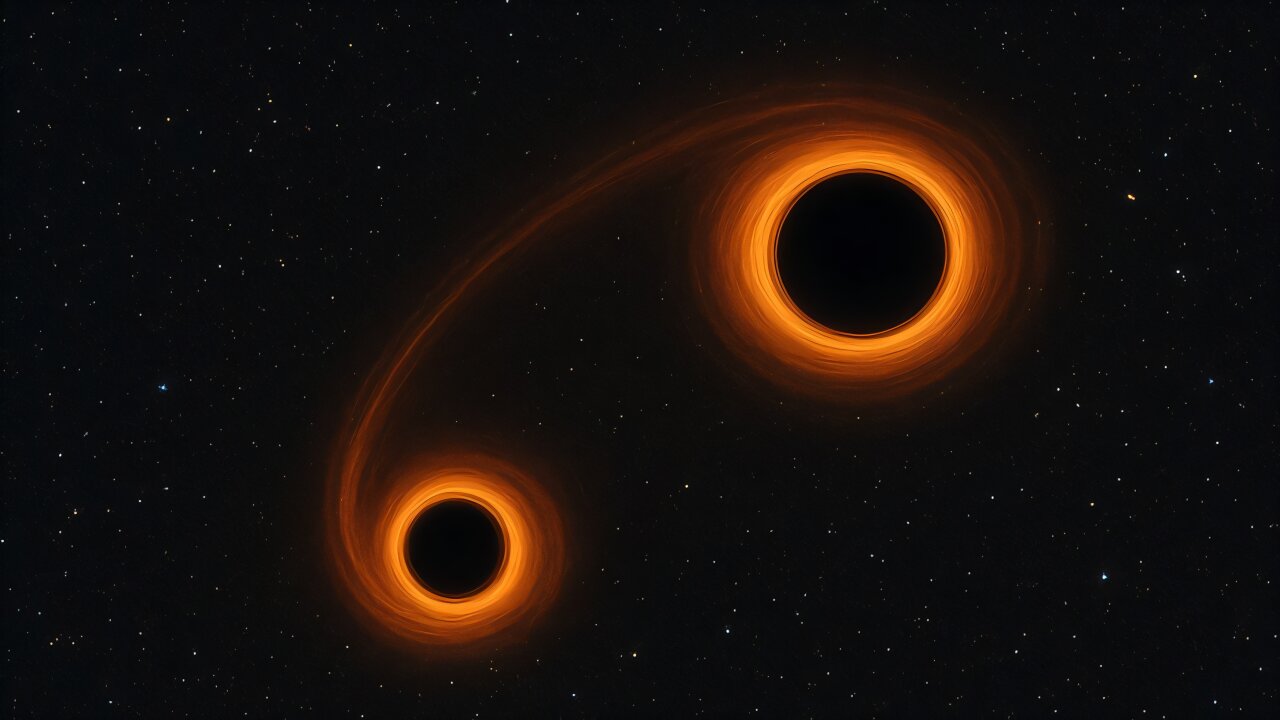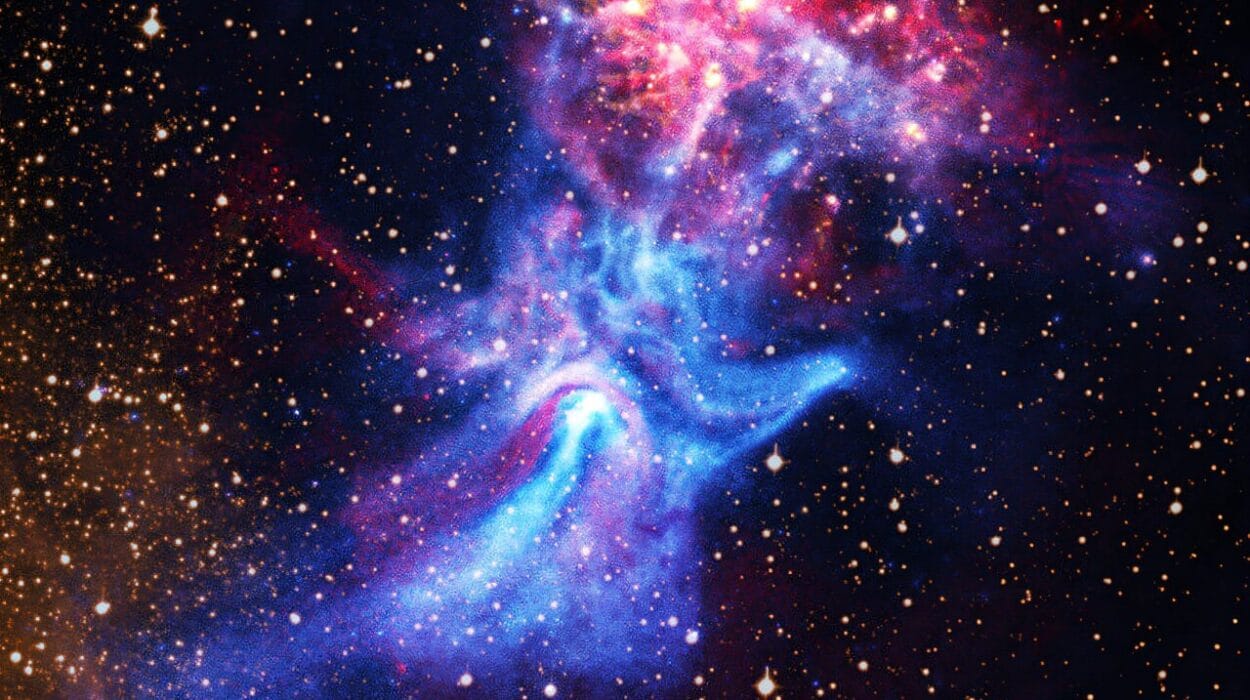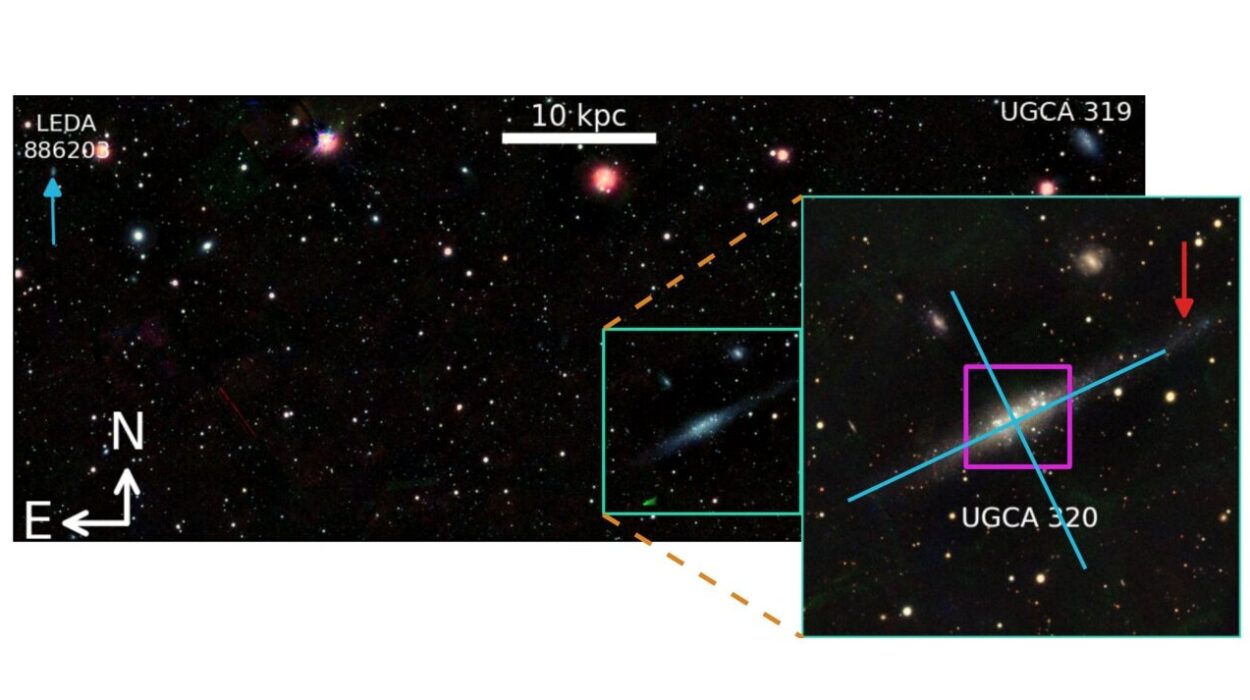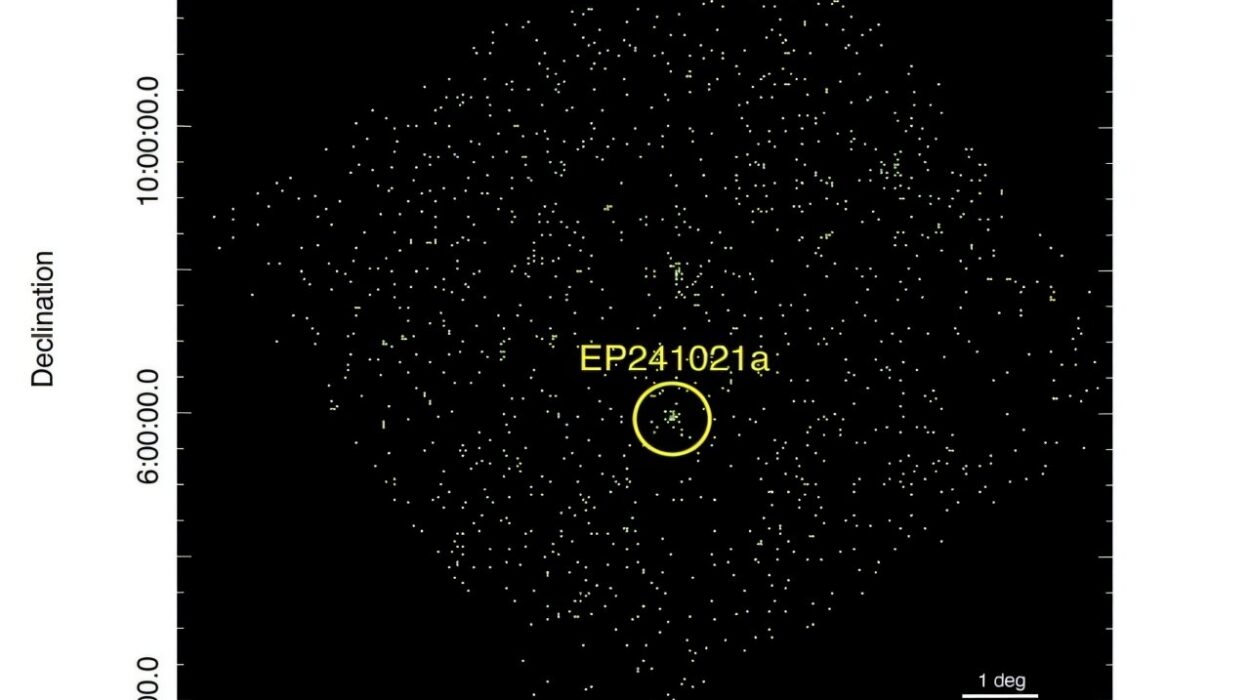Deep in the fabric of spacetime, two titanic forces spiraled toward each other — a pair of black holes, each the collapsed core of a once-mighty star. For eons, they circled one another in an intricate cosmic dance, their gravitational embrace tightening until they finally collided in a burst so powerful it sent ripples through the universe itself. These ripples, known as gravitational waves, traveled across billions of light-years before faintly trembling the detectors of the Laser Interferometer Gravitational-Wave Observatory (LIGO) in the United States and Virgo in Italy.
The event, named GW200208_222617, might sound like a string of numbers and letters, but behind it lies one of the most intriguing and mysterious stories in modern astrophysics. This was not just another collision between black holes — it was something far rarer. These black holes appeared to have been locked in an eccentric, “squashed” orbit, an unusual configuration that hints at a chaotic and crowded origin.
The Search for Cosmic Clues
To the untrained eye, all black hole mergers may seem alike — two invisible titans colliding in the void. But scientists can tell their histories apart by studying the shape of their orbits and the ripples they create. Most binary black holes follow nearly perfectly circular paths by the time they merge. This circularization happens because, as two black holes orbit one another, they lose energy through gravitational waves, gradually smoothing out any initial irregularities in their orbit.
Yet GW200208_222617 broke the pattern. The gravitational waves it produced revealed a subtle signature — an orbital eccentricity, meaning that the two black holes did not spiral together in smooth circles but rather in elongated, oval paths. It was as if their final dance had been distorted, as though pulled by unseen hands.
This clue suggested that these black holes might not have spent a quiet eternity alone in space. Instead, they could have been part of a bustling stellar environment — a triple-star system or a dense star cluster — where gravitational interactions with other stars or black holes jolted them into their eccentric dance.
The Detectives of the Cosmos
To uncover the origins of this extraordinary event, an international team of astrophysicists turned to advanced simulations. They modeled three possible birthplaces for the binary black hole system:
- A field triple, where two black holes are part of a system with a third companion star.
- A dense star cluster, where many stars and black holes interact in close quarters.
- An active galactic nucleus, the swirling, high-energy disk of matter surrounding a supermassive black hole.
Their results, published in Physical Review D, strongly favored the first two scenarios. It appeared that GW200208_222617 was born not in isolation, but in an environment where chaos reigns — a gravitational jungle where encounters between massive bodies are frequent and violent.
Dr. Isobel Romero-Shaw, lead author of the study and a researcher at Cardiff University’s Gravity Exploration Institute, explained the importance of this discovery:
“Confidently detecting eccentricity is crucial for identifying how the binary black holes that we see with gravitational waves are forming. Most binaries that have lived together for a long time will have circular orbits. If the orbit is squashed, or eccentric, it means the binary either became bound relatively recently — perhaps the components only just met — or the orbit has been driven to higher eccentricity through interactions with external matter, like gas or a third object.”
Why Eccentricity Matters
Eccentricity is more than just a geometric curiosity — it’s a cosmic fingerprint. When astronomers detect an eccentric orbit, it tells them that the merger didn’t happen in solitude. A pair of black holes that quietly evolve together from two massive stars will, over millions of years, lose their orbital eccentricity as gravitational waves drain their energy. By the time they collide, their dance is smooth and circular.
But a squashed orbit means something disturbed that peace — a third star, a nearby black hole, or even a cluster of stellar neighbors. These interactions can fling the binary into a tighter, faster orbit, dramatically speeding up their merger and leaving behind a detectable trace of eccentricity in the gravitational waves.
Dr. Romero-Shaw describes this as “smoking gun evidence” — the telltale sign that these black holes had company. “If a single eccentric event is confidently detected,” she said, “many more of the binary black holes we’ve seen also likely evolved through the same formation channel.”
A Universe of Collisions
The discovery of GW200208_222617 adds a new chapter to the story of how black holes meet their fate. In the vastness of the universe, there are many roads that lead to a black hole merger. Some begin as binary star systems, where two massive stars are born together, live, die, and collapse into black holes that continue orbiting each other. Others form through gravitational encounters in dense star clusters, where chance meetings between black holes can create temporary partnerships that end in collision.
The eccentricity of this event strongly suggests a dynamic formation, likely in a dense stellar environment where gravitational tug-of-war games are common. Such places — globular clusters or the crowded cores of galaxies — are teeming with massive stars and black holes, all exerting their influence on one another. A small disturbance can send two black holes on a collision course, their orbits stretched and distorted until the final, cataclysmic merger.
Listening to the Universe
The ability to detect and analyze such subtle clues is one of the greatest achievements of modern science. Gravitational-wave observatories like LIGO, Virgo, and KAGRA have opened an entirely new window to the cosmos. Instead of seeing light, astronomers are now listening to the vibrations of spacetime itself — faint ripples from cataclysmic events that occurred billions of years ago.
Each detection adds to humanity’s growing catalog of cosmic collisions. But not all are alike. The unusual eccentricity of GW200208_222617 is helping scientists refine their models and understand how different environments shape the lives and deaths of black holes.
The Human Side of Discovery
Behind the complex simulations and gravitational data are scientists who, like cosmic detectives, piece together the story of the universe from the faintest of signals. For Dr. Romero-Shaw and her colleagues, the work is as emotional as it is intellectual. They are tracing the echoes of ancient cataclysms — events that reshaped spacetime long before life existed on Earth.
There’s something profoundly humbling about studying such distant phenomena. The light from the stars that once surrounded these black holes may have vanished eons ago, but their gravitational whispers still reach us today, carrying messages across time. To interpret them is to read the universe’s autobiography, one collision at a time.
Toward a New Era of Cosmic Understanding
As gravitational-wave astronomy matures, scientists are building ever more sophisticated models to interpret the signals they detect. The team studying GW200208_222617 hopes that their findings will motivate further advances in waveform modeling — mathematical descriptions of how gravitational waves behave when emitted by complex systems.
With better models, future detections could reveal even more detailed information: the spins of the black holes, their masses, and the environments they came from. Each new observation refines our understanding of how galaxies evolve and how gravity shapes the cosmos.
The Symphony of Spacetime
In a universe where light can be swallowed but gravity sings, black hole mergers are the most dramatic performances of all. The discovery of GW200208_222617, with its peculiar, squashed orbit, reminds us that even in the deepest darkness, there are patterns, relationships, and histories to uncover.
These cosmic collisions are not random acts of destruction. They are part of a vast evolutionary process, sculpting galaxies and seeding the universe with energy. Every ripple we detect from a distant merger tells a story of transformation — from star to black hole, from chaos to harmony, from silence to sound.
Through instruments like LIGO and Virgo, humanity has learned to listen to the universe’s deepest voice. And what we hear is both haunting and beautiful: the echo of creation, the resonance of fate, and the quiet music of eternity playing through the fabric of spacetime itself.
More information: Isobel Romero-Shaw et al, GW200208_222617 as an eccentric black-hole binary merger: Properties and astrophysical implications, Physical Review D (2025). DOI: 10.1103/jj7m-x66y






